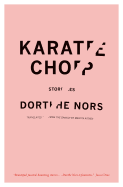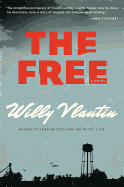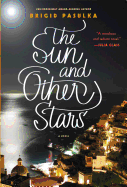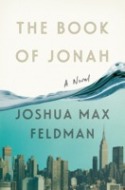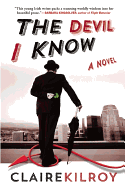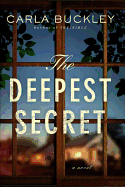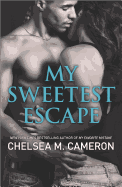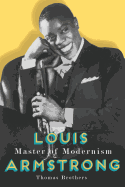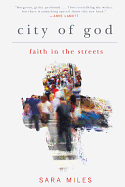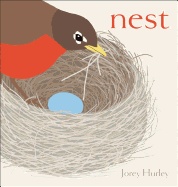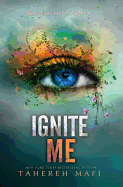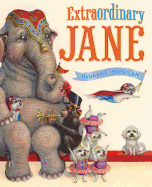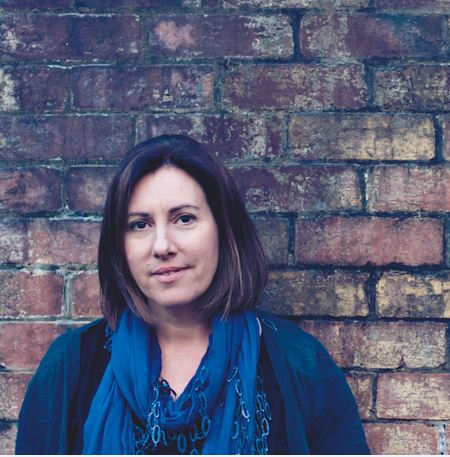 |
| photo: Sonya Coe |
After working for years as a registered nurse, Karen Foxlee turned to writing. Her first novel, aimed at young adults, The Anatomy of Wings, won the 2008 Dobbie Award and the 2008 Commonwealth Prize. Ophelia and the Marvelous Boy, her third novel, is her first book for middle-grade readers. She lives in Queensland, Australia.
Your novel uses the themes from Hans Christian Andersen's The Snow Queen in such original ways. Is this a favorite fairy tale of yours?
My mother read to us from Andersen's Fairy Tales when I was a child. It was a large white book, with illustrations by Jiří Trnka. My favorite was always "The Snow Queen," first read by my mum and later, again and again, by myself. I think the thing that attracted me most was the theme of love and friendship. Gerda is just a little girl, yet she embarks on this treacherous journey to rescue Kai. She never gives up on him, even though he is so changed by that splinter of mirror in his eye.
And I think the Snow Queen was my first-ever true villain. I was so fascinated by her as a character--she's a woman, and she's riding around stealing kids! I can remember just being left breathless by the horror of that. But there was always something so sad and lonely about the Snow Queen--why was she all alone in that icy palace?
In many ways too, that fairy tale played to something much deeper in my heart. My grandparents came from Finland to Australia in the 1920s, and each time I read The Snow Queen, especially as Gerda draws closer to Lapland, I was imagining where part of me came from.
You've kept elements of the original Snow Queen, yet made them uniquely your own. For instance, it appears that Alice, in some ways, takes the place of the boy Kai in the original tale. And the rescue scene is very similar. But many other elements are uniquely your own--such as the wizards. How did that storyline develop?
There are many parallels with the fairy tale. Ophelia sets off to rescue the boy. But in a reverse of the fairy tale, the boy himself sets off on a remarkable journey to rescue the world (and, in many ways, Ophelia's heart). And Alice's coldness mirrors the coldness of Kai as he falls under the Snow Queen's spell (and the King as well). You'd probably think I had that all worked out from the start but I didn't. It's only through lots of writing and understanding my characters and trying all manner of "what ifs" that I get anywhere.
The wizards were there from the beginning, though. In fact, my first drafts were almost entirely about the boy and the wizards, and Ophelia hardly featured at all. I wanted the wizards to be the good to the Snow Queen's bad, and I loved them immediately, so tall and quiet and surviving on biscuits alone. But like all my stories, I began to whittle away, carve and polish, and I was left with only glimpses of these wizards, and the place that the boy comes from. Beautiful, meaningful glimpses, I hope.
We also loved floor seven's misery birds, and the haunting hall of "ghostly girls" (especially Kyra Marinova). How did you come up with these?
The museum kind of grows up around the Boy. I love museums and I guess in many ways I came up with these other floors by exploring that place through my imagination and writing, literally.
The ghostly girls appeared in original drafts in a forest that the boy had to make his way through. I turned that idea into a challenge for Ophelia. The ghosts were once girls who were placed in the Queen's horrible machine. They only "survive" by sticking together and telling each other their stories. But I loved that Kyra stands away from the crowd to help Ophelia.
Ophelia has to go to the seventh floor to retrieve a key and, when I took her there, I found it consisted of two long corridors filled with many locked doors. What could be behind those doors, I thought? What would be the scariest thing? So the misery birds came into existence. Even I was frightened of them.
And the Wintertide Clock?
I like working with time. It seemed a really useful device to organize the story and give it momentum with the ticking of that terrible clock counting down to the end! It didn't show up until quite late in the writing.
What were the origins of the three keys?
Likewise, the keys came quite late in the piece. For Ophelia to undertake three (what a magical number!) challenges, steadily increasing in difficulty, to retrieve the keys seemed like the perfect way to organize my story. Will she be able to find the keys, will she able to release the boy from his prison room? I'm drawn to these kinds of objects--keys and wands and charms and compasses. Swords as well. Swords feature in so many folktales around the world, and from the beginning I wanted the Snow Queen to have her own sword, The Great Sorrow, and for the wizards to make the boy a magical sword to do battle with her.
Ophelia helps the boy almost against her will. She's such a girl of science and facts--much like your narrator Jennifer in The Anatomy of Wings--yet she must resign herself to the magic she witnesses. Was that a way of also reconciling Ophelia to those parts of her mother?
Yes, Ophelia is like Jennifer in some ways, isn't she? Ophelia is so different from her mother. She likes her world ordered and labeled and everything provable, whereas her mother could just about believe in anything. I liked taking that approach to magic. I wanted a character who didn't believe, to be gradually changed by magic.
Much of the magic in the story is about Ophelia opening her heart to new possibilities--trusting her instincts, not questioning everything, just being. Experiencing sadness and excitement and joy. Feeling her way through this terribly changed landscape of her life, with her heart.
I think it was also just a little about me and magic. I've always got a hundred questions in my mind and, when it comes to magic, they always seem a little scientific. Where do Snow Queens come from? Do they have mothers? What is the life cycle of a troll? Is there a hierarchy of magical things? So in many ways, it was me sorting myself out as well.
The contrast between the friendship of the Marvelous Boy and the King, and the friendship between the boy and Ophelia is so striking, too. It's almost as if, when the King grew up, he lost sight of what was important. Is that part of what's going on here? Alice is in many ways caught at this threshold, too.
In so many ways, and in so many places, we come to these thresholds, these places of goodbye. The King grows up and away from the boy, who never changes. Then there is Alice, who is changing as well--growing up, hardening with her grief. There is the long goodbye between Ophelia and her dead mother, and the farewell between the Marvelous Boy and his own mother, both of which still, to this day, move me to tears. Kyra chooses to say goodbye to the ghost girls. And, of course, Ophelia and the Marvelous Boy must say goodbye eventually.
In many ways I was asking myself, I think, what does goodbye mean? Certainly in the case of Ophelia and her mother, that final goodbye, do the people we love ever really leave us, or do we carry them around inside us forever?
Even though Ophelia's father is an absent-minded professor type, unaware of her whereabouts, Ophelia's mother is always with her. And of course, she has the boy's friendship. Why was it important for Ophelia to feel that she does not to have to go on this quest alone?
I was thinking so much about my own life and my own child and what would happen if I were ever gone. What would be the most important things for my child to know if I were leaving? Susan Worthington, Ophelia's mother, gives these answers to Ophelia via the wizard's letter: Being kind, extending your hand in friendship, always stopping to help, being patient, never giving up and always knowing there will be people there to help you.
I think in life there are people who will help you; we forget it, but there are. And I'm a strong believer in always helping others. I can remember after my dad died, when I was in my 20s, every so often feeling him with me. He was there, right there with me, and it was such a comforting feeling. I wanted Ophelia to have that as well, this ongoing guidance and conversation with her mother. That Ophelia should never feel alone felt so important to me. --Jennifer M. Brown
Karen Foxlee: Magic and Friendship
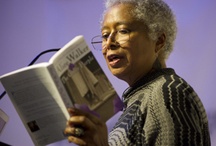 Of course, the film also highlights Walker's books, the best known of which is The Color Purple, which won the Pulitzer Prize and National Book Award. It was also adapted into a musical, as well as the film directed by Steven Spielberg and starring Whoopi Goldberg, Danny Glover and Oprah Winfrey. (Alice Walker: Beauty in Truth includes interviews with Spielberg and Glover, along with Quincy Jones, Gloria Steinem, Sapphire and the late Howard Zinn.)
Of course, the film also highlights Walker's books, the best known of which is The Color Purple, which won the Pulitzer Prize and National Book Award. It was also adapted into a musical, as well as the film directed by Steven Spielberg and starring Whoopi Goldberg, Danny Glover and Oprah Winfrey. (Alice Walker: Beauty in Truth includes interviews with Spielberg and Glover, along with Quincy Jones, Gloria Steinem, Sapphire and the late Howard Zinn.)


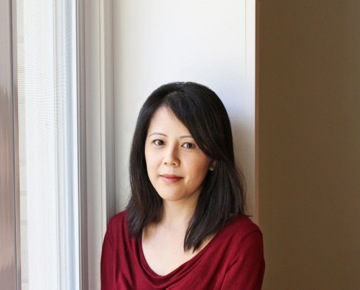
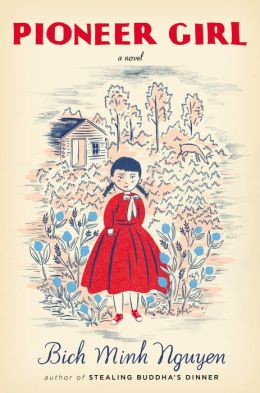 How does Lee's relationship with her family mirror the relationships within your own family?
How does Lee's relationship with her family mirror the relationships within your own family?



